What is Ramadan?
Ramadan, a spiritual recharge, is the ninth month of the Islamic calendar and the month in which Prophet Muhammad (SAW) first began receiving chapters of the Quran from the angel Gabriel in the year 610 A.D. in the Cave of Hira, near Mecca, Saudi Arabia. Because the Islamic calendar is based on the phases of the moon, each year Ramadan begins 15 days earlier than the previous year. During the month of Ramadan, Muslims around the world take part in fasting. Why do Muslims fast? There are a few answers to this, but the most agreed-upon answer is because Allah (God) asked us to in the holy Quran.
Fasting during Ramadan is one of the Five Pillars of Islam. The Five Pillars of Islam are: faith (Shahada), prayer (Salat), charity (Zakat), fasting (Siam), and pilgrimage (Hajj). Depending on geographic location and time of year, the hours of each day spent fasting can be very different. For example, this year (2022) Muslims in Helsinki, Finland, will fast for 19 hours, but Muslims in Cape Town, South Africa, will fast less than 12 hours.
Recipes for Ramadan
The delicious recipes to make for Iftar and Eid-al-Fitr during Ramadan are truly endless, so it was difficult for us to narrow it down. Listed are just some of our top favorite recipes for Ramadan.
Ayran
A unique savory and refreshing yogurt beverage with several variations, ayran is served across the Middle East and Southern Asia. Tart yogurt is blended with ice, mint, and salt, creating a cool concoction that can help you withstand the desert heat.
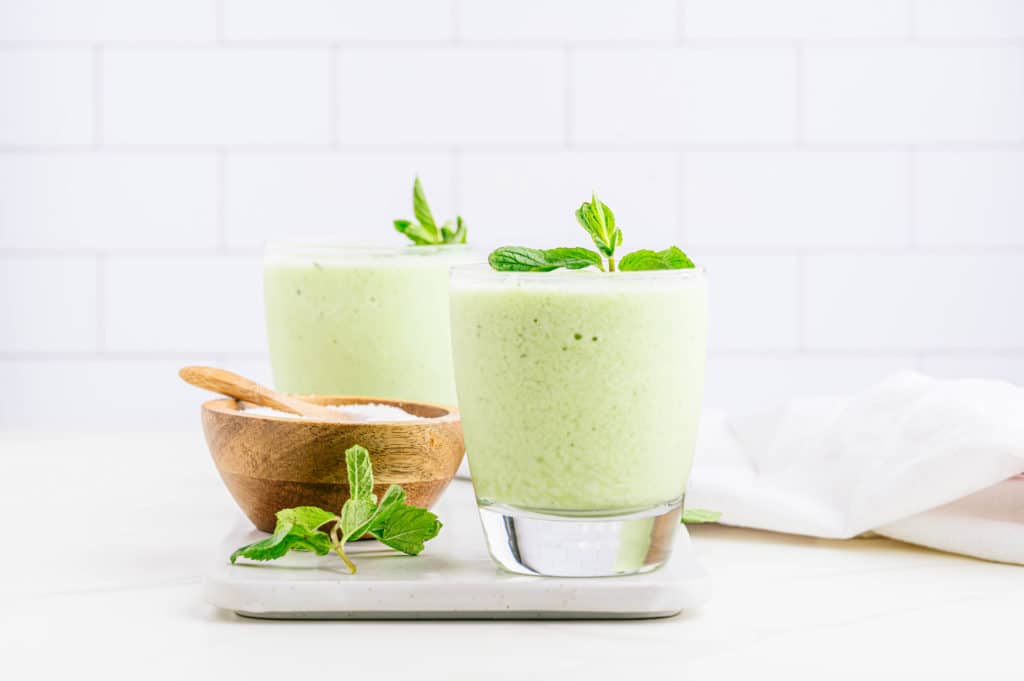
Kousa Mahshi bil Laban
Hollowed-out zucchini are filled with savory herbed rice and ground halal lamb, then stewed in a yogurt-based broth.
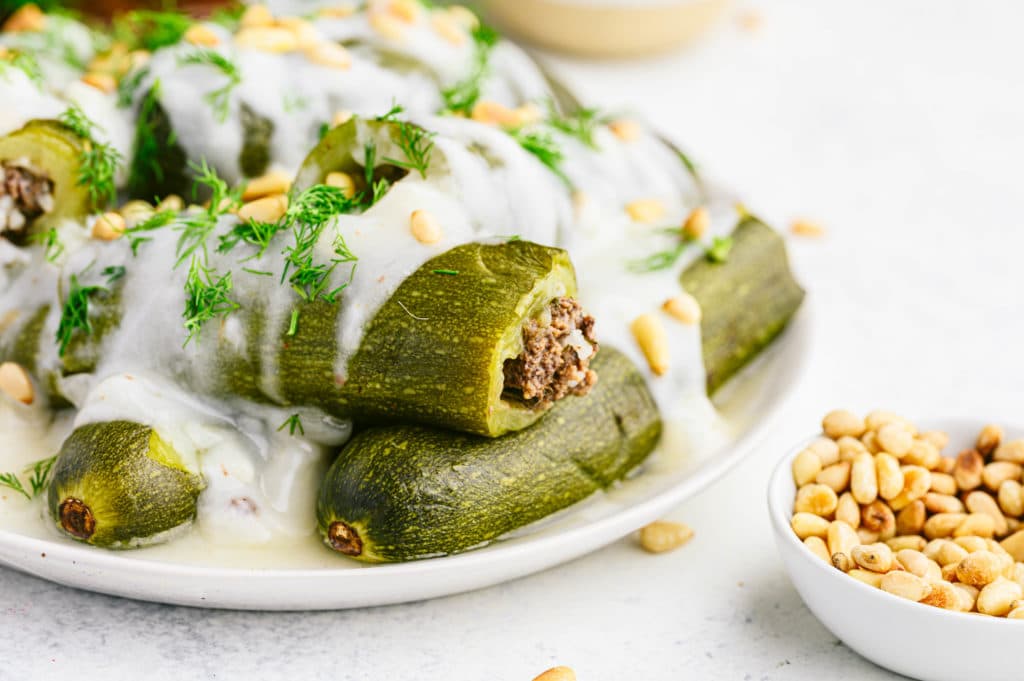
Kaak
Kaak is a special bread often served in many areas of the Middle East, including Palestine, the Sham Region of the Middle East, and Turkey. Milk, honey, and tahini (ground sesame seed paste) give this dough an extra special light, fluffy texture and subtly sweet caramel background notes. This bread pairs perfectly with a drizzle of honey, cheese, eggs, olives, and pretty much whatever you like, so make it your own.
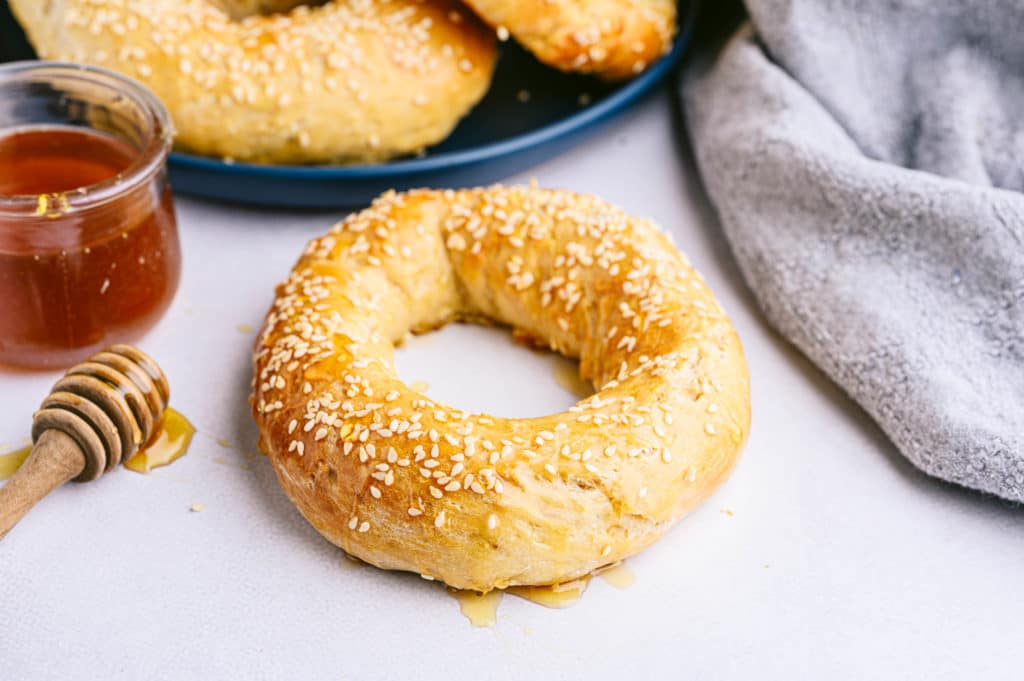
Khyar bi Laban
This condiment is a cousin of Greek tzatziki and Indian raita. Fragrant diced cucumber, dill, mint, and minced fresh garlic meld together in a tart yogurt base that can be used as a tangy, savory sauce or a refreshing dip. It’s a perfect accompaniment to warm pita bread, fresh veggies, or grilled meats.
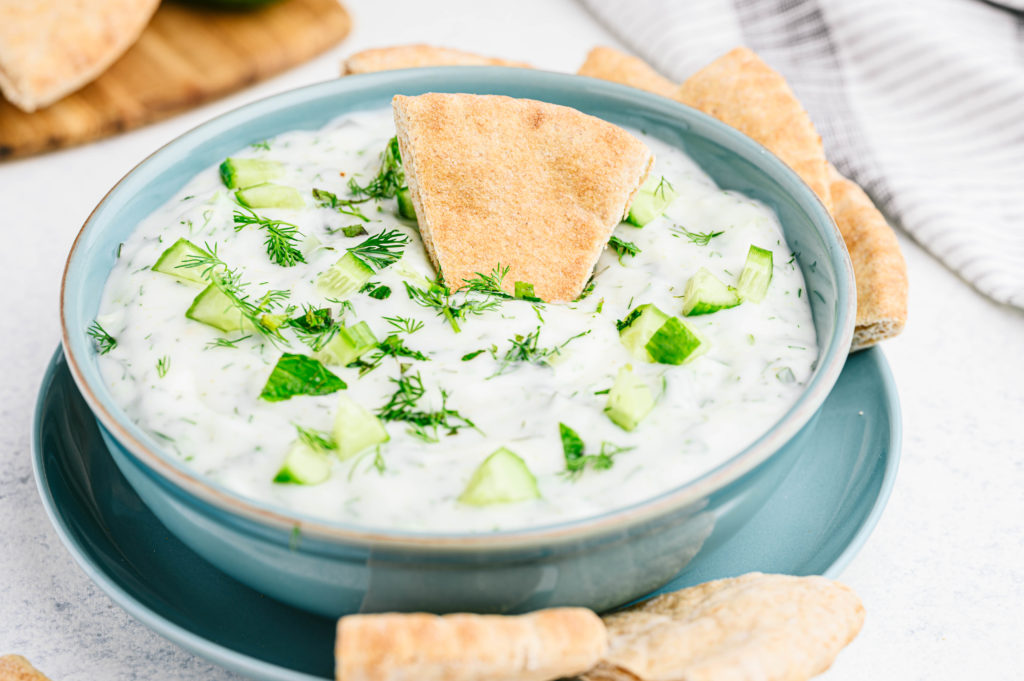
Labna
Tangy yogurt is concentrated into a rich, spreadable cheese when slowly strained through a triple cotton cheesecloth-lined sieve to remove excess liquid. Labna is a standard condiment used as a dip and sandwich spread. While a peanut butter and jelly sandwich is a popular lunch for school-aged American children, Arab children often pack labna and cucumber sandwiches served on pita bread.
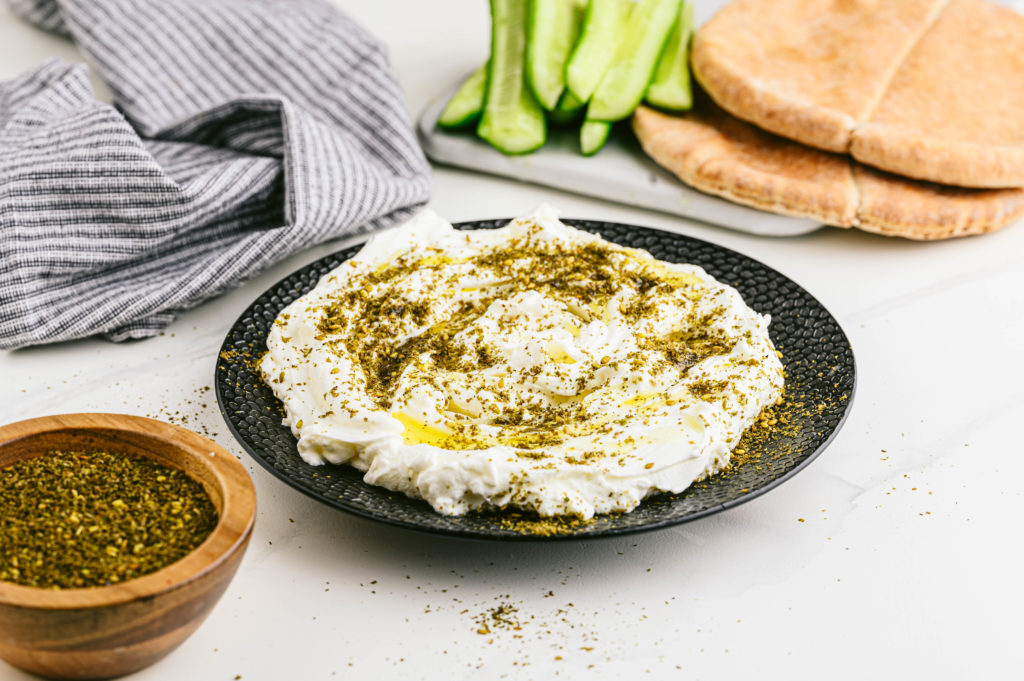
Mansaf
Mansaf is the official dish of Arab hospitality, featuring halal lamb shanks that are gently stewed slow and low until fork-tender in a yogurt-based sauce, then served over a golden turmeric basmati rice pilaf topped with roasted almonds. The time and skill it takes to make this dish are letters of love and respect folded between each flavorful grain of rice, soft morsel of lamb, tangy bite of yogurt, and crunch of roasted almond.
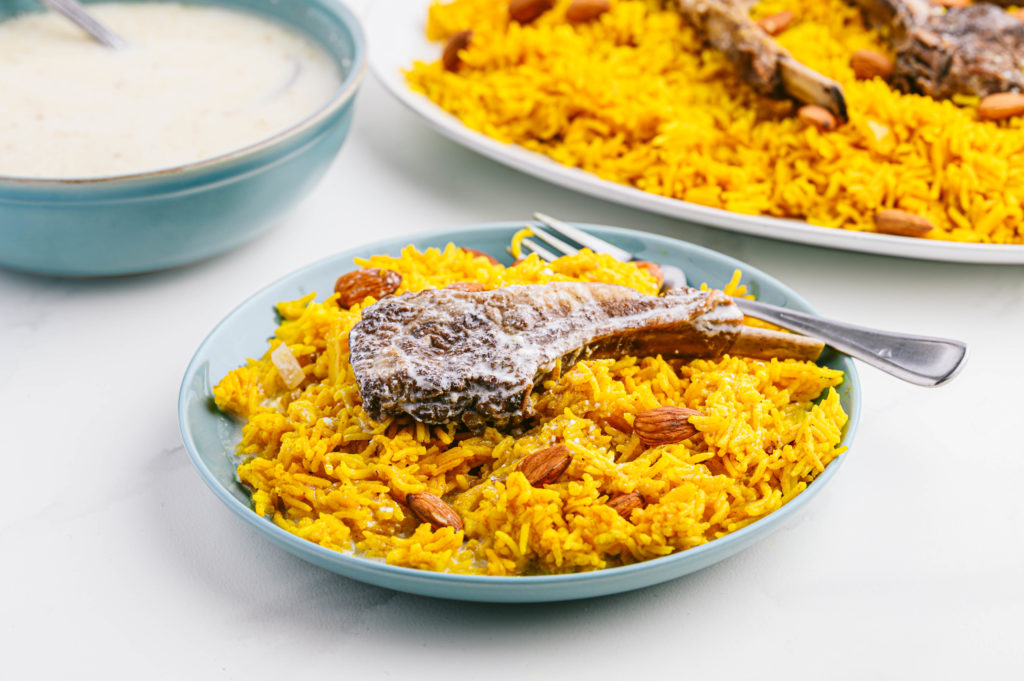
Knafeh
A famous Palestinian torte, knafeh has layers of buttery, toasted, shredded filo sandwiching sweet, stretchy cheese. It’s soaked in a rose water simple syrup and garnished with roasted pistachios.
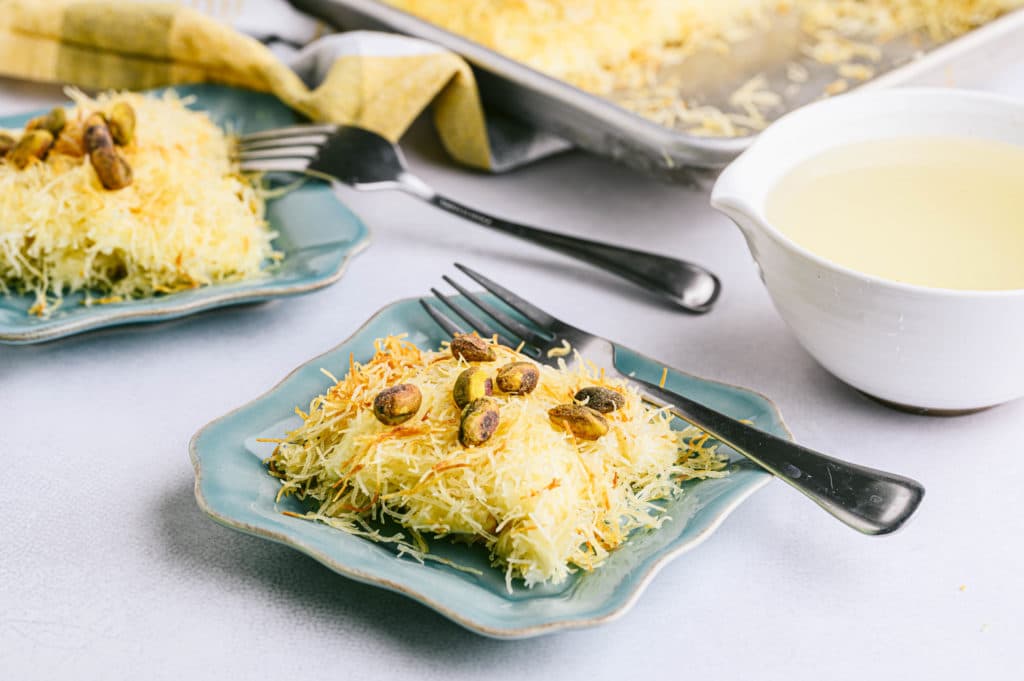
Knafeh Cheesecake
This dessert is a true blend of both Palestinian and American cuisines. Traditional knafeh is reborn, with crispy, buttery, shredded filo (katafi) playing the crust to a cardamom cheesecake. The dessert is decorated with garnishes of ground pistachios, a few dried rose petals, and rose syrup.
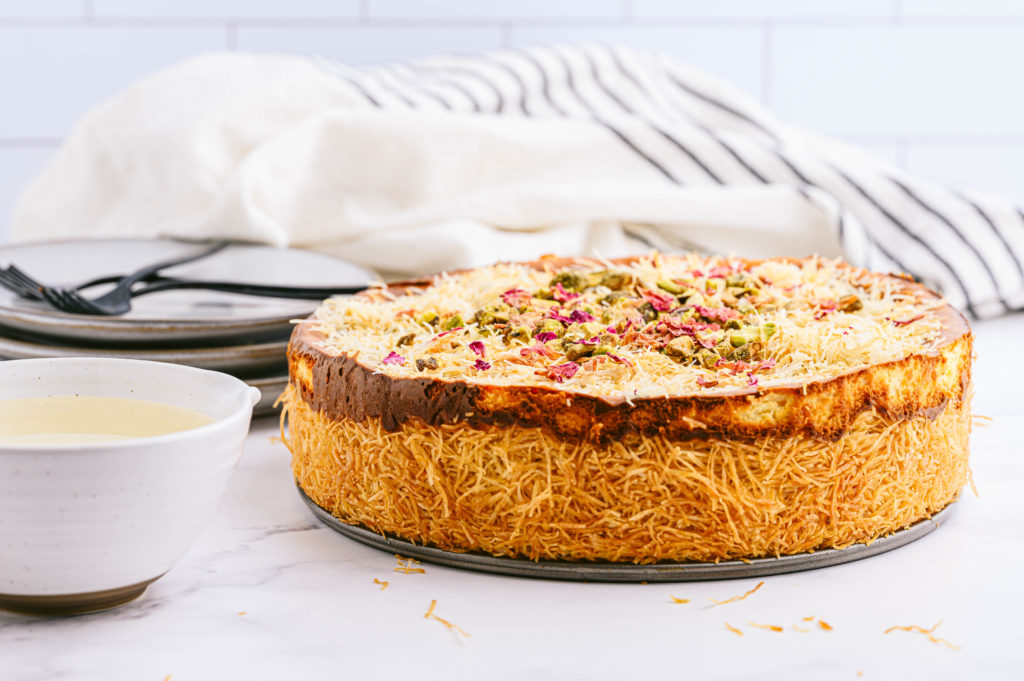
Qatayef
A special dessert served throughout the Middle East during the month of Ramadan. Qatayef is small, pancake-like shells filled with sweet, stringy cheese. Each qatayef is then served warm and drenched in sweet rose water syrup.
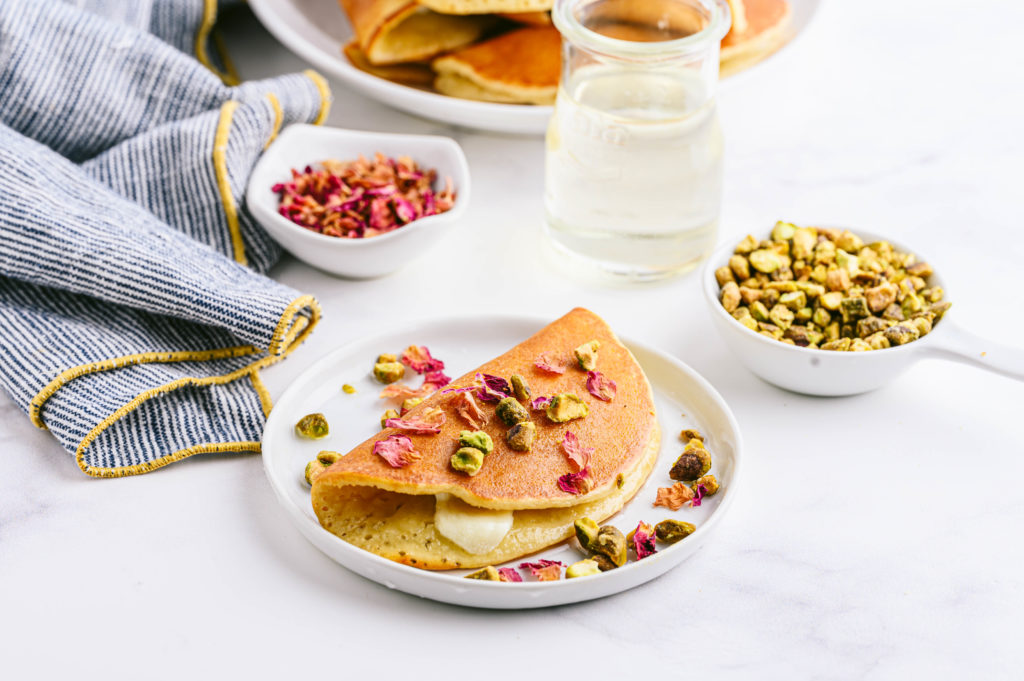
Riz bi Haleeb
A fragrant and creamy rice pudding gently flavored with orange blossom.
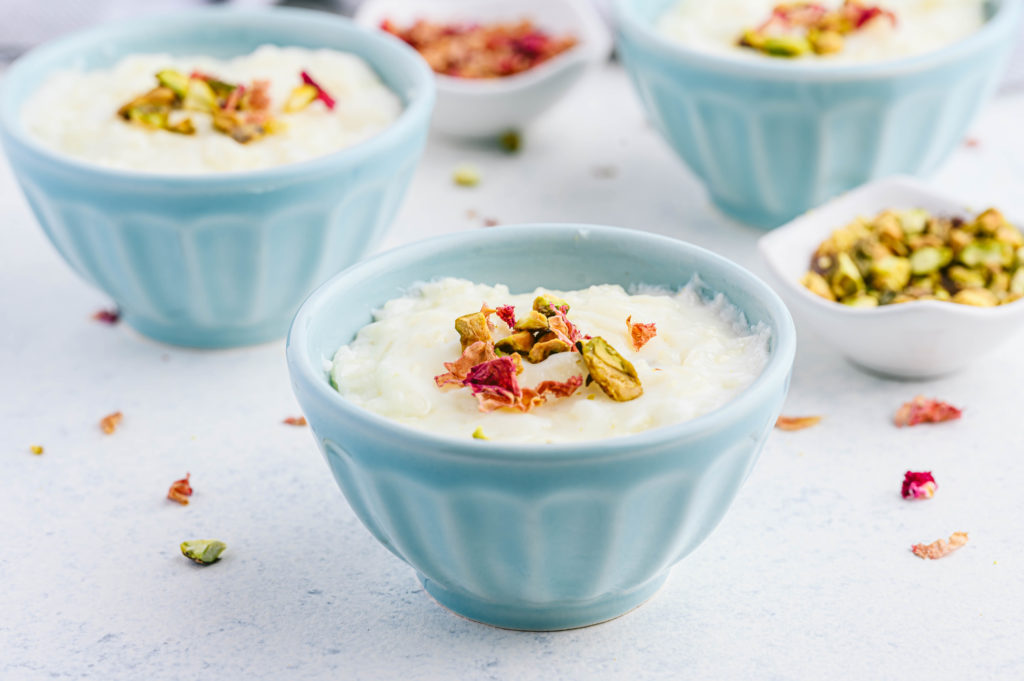
Sahlab
This light drinking custard features rose water essence and is served warm. It is often prepared in place of coffee or tea during cool weather; the perfect warm welcome to friends and family visiting during social events.
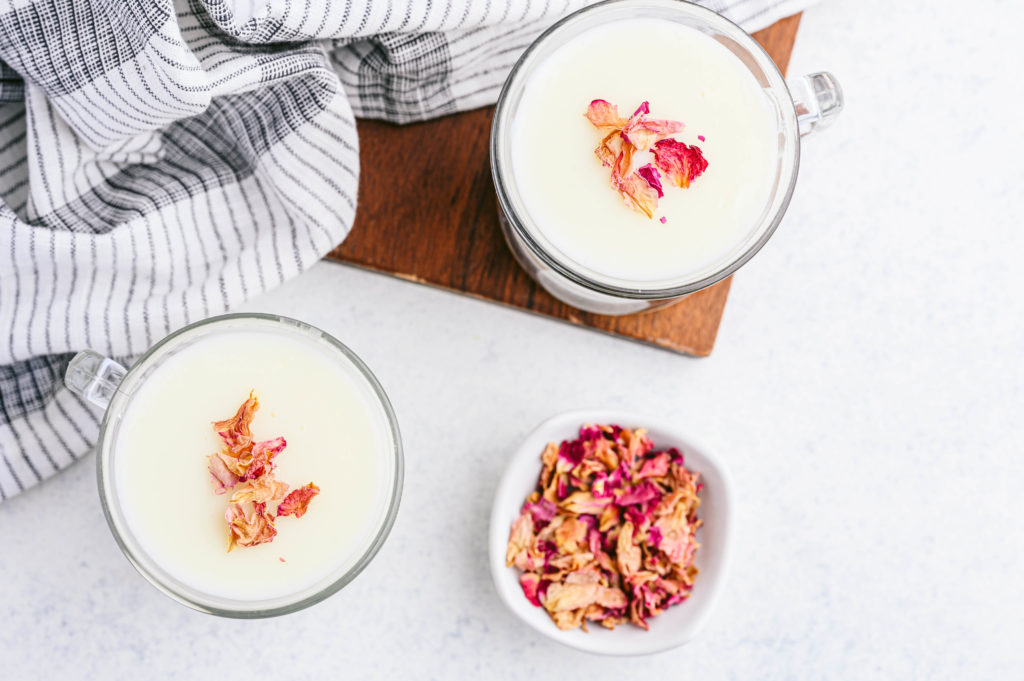
Why do people fast during Ramadan?
While the focus is so often on what Muslims don’t do during Ramadan, the beauty of this month is found in the things that we do take part in. Through fasting and taking part in Ramadan, we are reminded to care for those who have less, better understand the effects of food insecurity and hunger, and grow closer as a community.
It is said that Prophet Muhammad (SAW), the messenger of Islam, began his fast each day by eating dates and drinking water before dawn. This morning meal is called suhoor and it is said that you receive extra good deeds for your fast if you wake up and eat suhoor before starting the fast. Some Muslims stick with the traditional water and dates, but suhoor can take many forms. Eating dates or sweet items at the very end of suhoor can help alleviate headaches that sometimes occur in the evening due to dehydration. During suhoor, it is best to avoid tea or coffee as these diuretics can lead to dehydration and headaches. Eating a balanced meal that is high in fiber and protein can prepare you to withstand the day without food or water.
What is Iftar?
Iftar takes place each night to break fast. People often cook large quantities of spectacular foods to share with family and friends for iftar. During Ramadan, the mosques are filled with families feasting on lavish potlucks of foods from different cultures and ethnicities. Foods that take too much time or attention to make on a regular basis make a grand entrance at iftar during the month of Ramadan. Desserts like qatayef, knafeh, and sahlab are shared regularly at night and early in the morning as part of suhoor. Although people are fasting and can’t eat or taste foods as we normally would while cooking, something magical often happens to food cooked during Ramadan. The food tastes incredible; I believe it’s the intention to serve others that improves the flavor in each bite.
Despite the beautiful and bountiful feasts consumed at iftar, food is not the focus of Ramadan. Love, humanity, respect, and spirituality are. The food served during Ramadan is just part of the package.
What is Eid-al-Fitr?
The month of Ramadan ends with the sighting of the new crescent moon signifying Eid-al Fitr (Celebration of Breaking Fast). Eid-al Fitr officially begins at night with the sight of the moon and is celebrated over the following three days. Eid is the one day of the month where fasting is not permitted. To celebrate Eid, families often gift one another new clothing, which is then worn to Eid prayer the next morning, as well as fancy chocolates, sweets, and fruit. Another important part of Eid-al Fitr is Zakat (charity). On Eid, Muslims donate 2.5% of their income to Zakat. Families will often donate the money to charities or give it directly to people they know are in need. This is often done during Salat el Eid (Eid Prayer). After Eid prayer, everyone celebrates in their own various familial traditions. If you are ever fortunate enough to be invited to an Eid celebration, be sure to bring your appetite!
